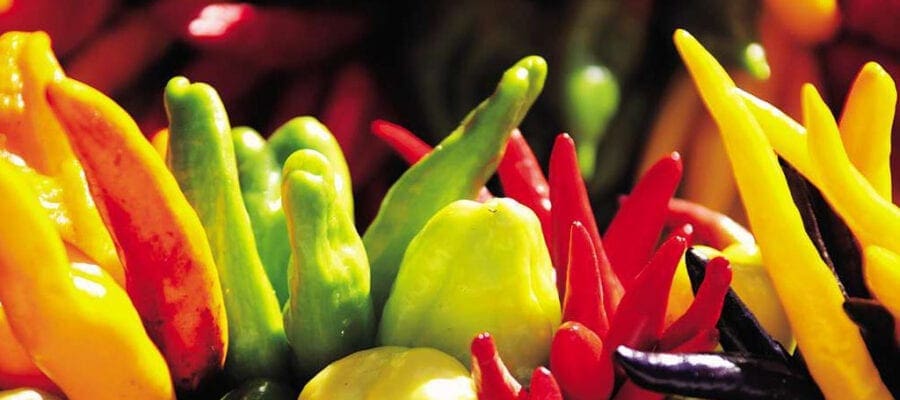There are two types of pepper, or capsicum, to give them their proper name. There are the chilli peppers and the sweet peppers, the latter being the milder relatives
Peppers are not the easiest of crops to grow because they do need warmth and sun to do well, but given the right conditions they will produce a good harvest. Ideally grow in a greenhouse or polytunnel or look out for varieties that will do well in pots on a sunny patio during the summer.
These are decorative plants and worth growing just for their show fruits even if you don’t harvest many of them to eat! However, you should eat them because they are packed with health-promoting properties.
Pepper Varieties
‘Tasty Grill Red F1’
Produces long red fruits up to 25cm (10in) in length. They are delicious sliced and grilled or stuffed or used in salads. Said not to ‘repeat’ on eating which is what puts some people off peppers! There is also a yellow form – ‘Tasty Grill Yellow F1’.
‘Big Banana’ F1’
Really sweet fruits up to 25cm (10in) long. They mature to a bright red.
‘Gypsy F1’
Masses of small fruits up to 10cm (4in) long and 8cm (3in) wide. Produces fruit earlier than some varieties and the fruits turn orange to red.
‘Jalapeno Summer Heat F1’
This is the pizza pepper! It has long narrow fruits that can be picked when green or left to mature to red.
‘Thai Dragon F1’
A truly hot variety that is a prolific cropper of 9cm (31⁄2in) red fruits.
‘Numex Twilight’
An attractive small plant to grow in a pot on the patio. The masses of tiny fruits ripen from purple to yellow, orange and red and all these colours can be on the plant at once.

Sowing & Growing Peppers
Peppers need quite a long growing season, so are usually sown quite early in February or March. Sow several seeds in small pots of multipurpose compost. Water well and place in a propagator or airing cupboard.
They need temperatures of about 15-21C (60-70F) to germinate. Once the seedlings are large enough to handle, transplant them, one seedling per small 9cm (31⁄2in) pot.
Place on a warm sunny windowsill to grow on. They may need to be moved on to the next pot size before planting out, but by about mid-April to early May they can be transferred to the greenhouse and be planted in large pots or growing-bags.
Peppers which are going to be grown on a patio will need to be kept indoors for longer. On warm, sunny days they can be placed outside but brought in at night.
By about the end of May or the beginning of June they can be planted into their final pots out on the patio.
Growing on peppers
Some of the dwarf peppers will naturally form bushy plants. The taller-growing ones should be given a
cane support and be tied in at regular intervals.
Keep the plants well watered but be careful not to overwater. It can take some time for the peppers to change colour – anything up to three weeks – so just be patient and they will eventually change.





